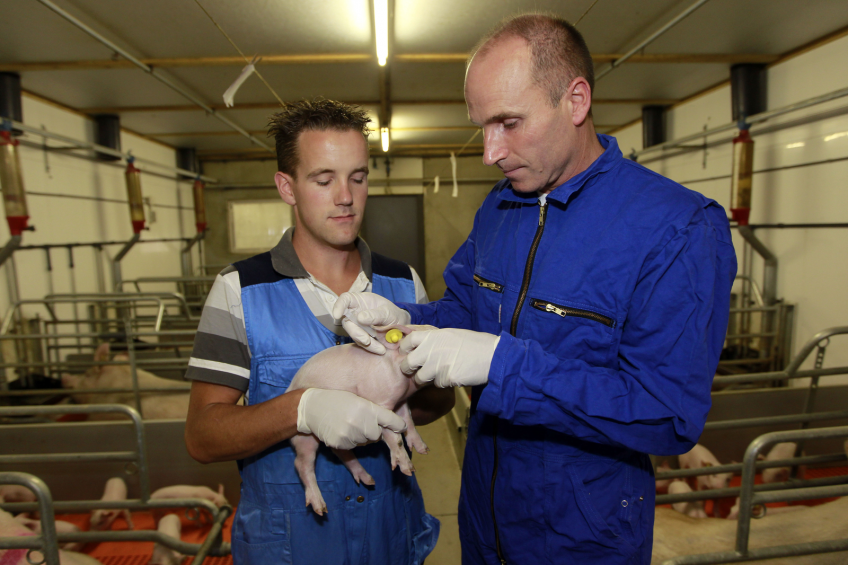Evolution of antibiotic resistance in pigs

Nearly £5M has been awarded to two flagship research projects into antimicrobial resistance (AMR), in one of the largest UK public grant investments in this area, according to the Medical Research Council (MRC) and the Biotechnology and Biological Sciences Research Council (BBSRC).
At the University of Cambridge, lead researcher Dr Mark Holmes will look into the effects of antibiotic use on the entire population of animal gut flora, not just the disease causing bacteria. His work, using research in pigs, is meant to help understand the evolution of antibiotic resistance and help to make better choices about how to reduce the spread of antimicrobial resistance on farms. “This is important not just for human health but also in our farming industry, which has a high dependence on blanket treatments of antibiotics, increasing the chances of developing resistance.”
Stop the spread of superbugs
Dr Des Walsh, Head of Infections and Immunity at the Medical Research Council (MRC), said: “If AMR is the problem, then research is the answer. It’s only with the best researchers working together on the highest quality research, with the financial muscle to make it all happen, that we will truly make headway in the battle to stop the spread of superbugs. It’s exciting that the UK houses such scientific talent and the skills to bring them all together. Looking at how superbugs affect our lives across the chain, from our farms to our pharmacies, is really important. This needs a cross-academia, cross-industry, and cross-continent approach.”
Unlock new types of antibiotics
At the University of Warwick, Prof Chris Dowson and his team have won over £3M of public money to investigate a vital link in the chain of antimicrobial resistance – the bacterial cell wall. The main component of the wall is called peptidoglycan, which is the key target of penicillin and other similar antibiotics. Despite its important role, little is known about how peptidoglycan is made and how antibiotics interfere with it at the biochemical, structural and cellular levels. “Without this knowledge we’re unlikely to understand how to develop new, effective antibiotics. This landmark project will pull together a unique group of world leaders in bacterial chemistry, genetics, physics and physiology in the area of peptidoglycan metabolism, structure and architecture. Academia, the pharmaceutical industry and charities will work hand in hand, on a global scale, in the hope to unlock new types of antibiotics.”
Antibiotic resistance a long-term problem with no quick fix
Prof Dowson: “Antibiotic resistance needs to be viewed as a long-term problem with no quick fix. It will be with us for many generations to come. To ‘beat the bug’ we need to accelerate discovery activities in partnership with industry. Our multidisciplinary team will develop new insight to key targets to help accelerate this discovery and will provide a platform upon which to train the next generation of researchers.”
Greater levels of infectious disease on farms requiring antibiotic treatment
Dr Mark Holmes at the University of Cambridge, said: “The rise of antibiotic resistance is clearly a threat to human and animal health. While increasing agricultural efficiency has delivered ever cheaper food it has also lead to greater levels of infectious disease on farms requiring antibiotic treatment. The use of antibiotics to treat groups of animals inevitably leads to the selection of resistant strains of bacteria on farms. By understanding how antibiotic resistance evolves, we hope to be able to inform smarter use of the drugs and stem, and even reverse, the tide of resistance.”
No new classes of antibiotics discovered for 25 years
The researchers say that antimicrobial resistance is a huge and complex problem for healthcare and agriculture. “Antibiotics have been used to treat bacterial infections in humans and animals for 70 years, but these medicines are becoming less and less effective. No new classes of antibiotics have been discovered for 25 years and some strains of bacteria are now unharmed by the drugs designed to kill them. It’s estimated that 10 million people around the world could die from drug resistant infections by 2050, if this problem is not addressed.”











